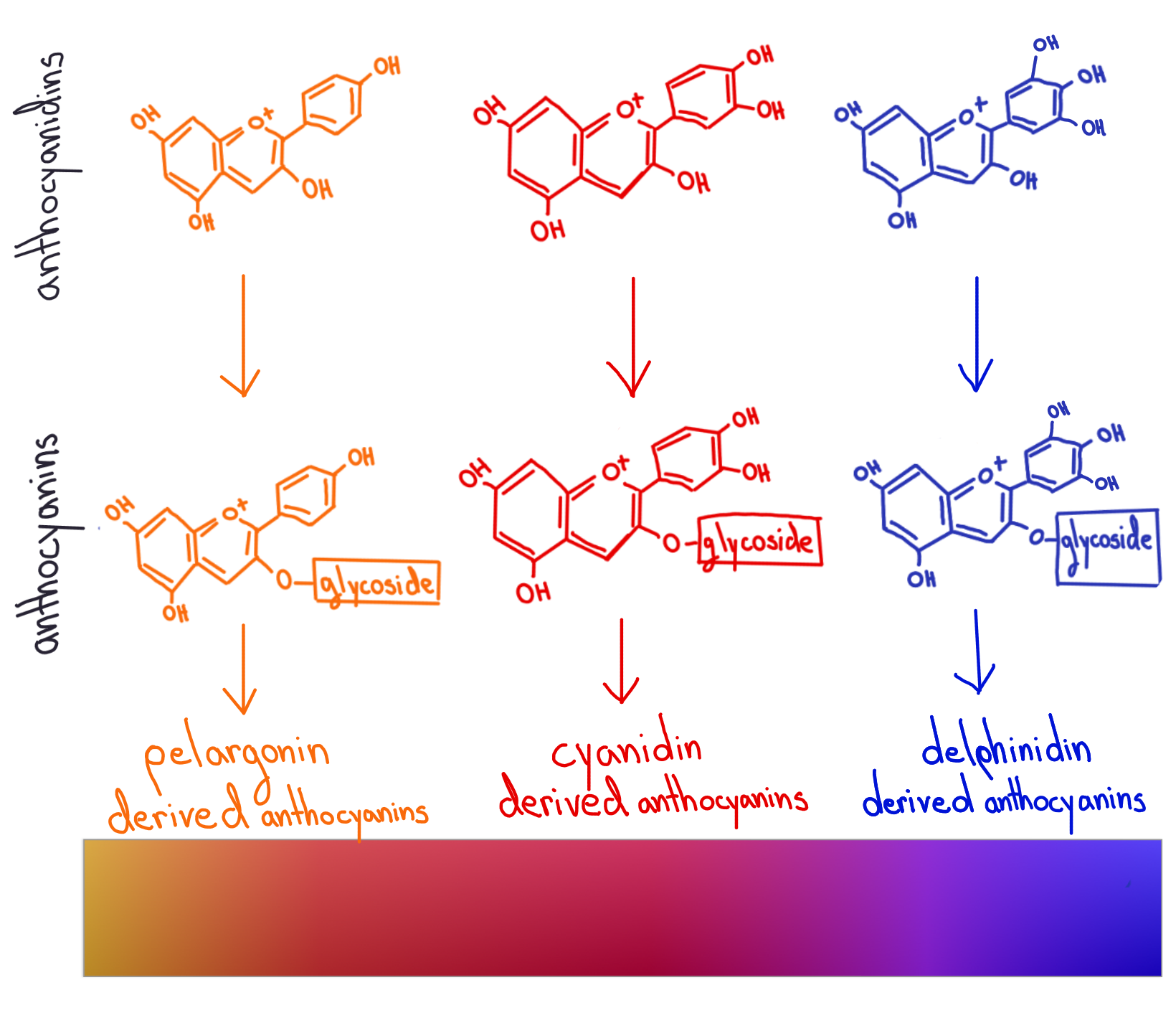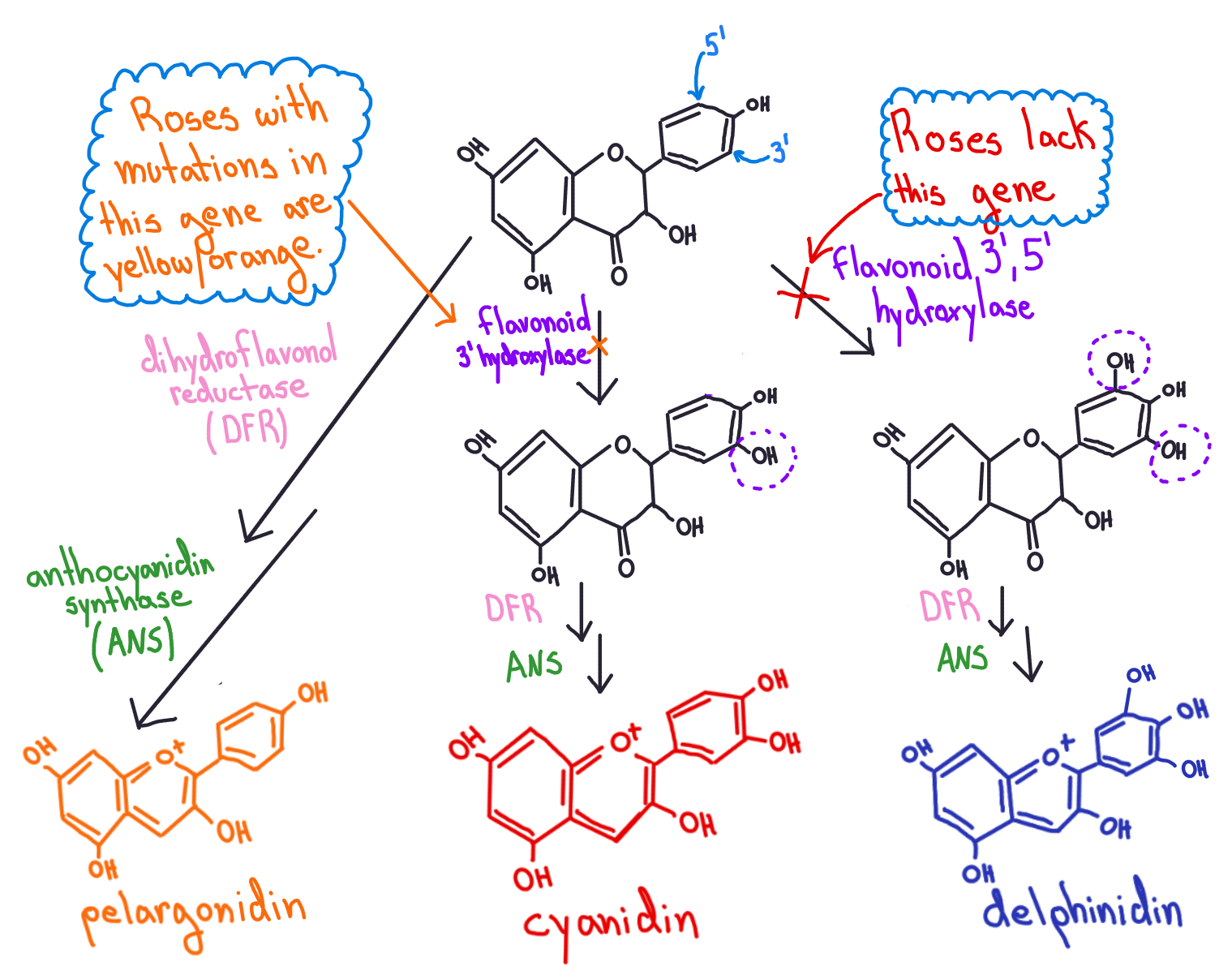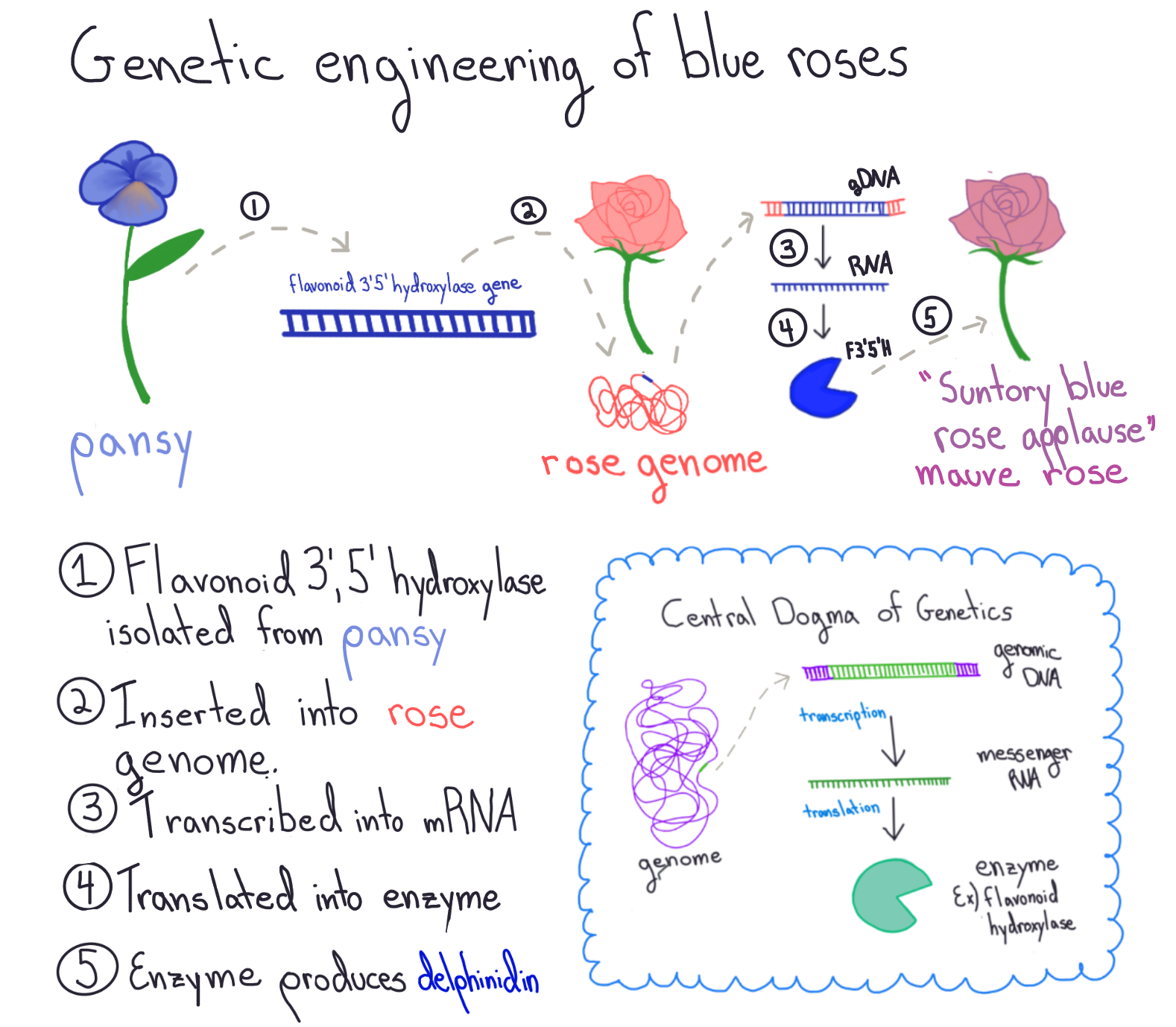Roses and the Impossible Blue
18 Apr 2022Blue rosese are a symbol of the impossible. From Tennessee William’s “Glass Menagerie” to David Lynch’s “Twin Peaks,” they have been used to represent the allure of strange beauty and supernatural secrets throughout literature and pop culture. These flowers can be used to symbolize the alien and unattainable. They are also famously the most challenging type of rose to breed in Animal Crossing: New Horizons.
Blue roses have earned this reputation for unattainability because they are impossible to breed naturally. They are the unicorn of flowers. The ones you purchase at the florist are usually white roses dyed blue, much like a horn strapped to the head of a white horse at the county fair. We all know it’s not a real unicorn, but we go along with it because it keeps the children happy.
Flower breeders have been working for decades to cultivate a naturally blue rose. In 1965, a variety of lilac-colored rose, called “Blue Moon,” was introduced on the market by the German hybridist Matias Tantau. In 2003, the greyish purple rose “Misty Purple” was introduced by the Japanese rose breeder Moriji Komori, and later in 2012, a lighter mauve rose named “Seiryu” by another Japanese breeder, Junko Kawamoto (Noda 2018). However, a truly blue rose has never been achieved using traditional hybridization and breeding methods. So why is this? Many other plant species make blue flowers, such as pansies, hydrangeas, and forget-me-nots. So why not roses?
The answer lies within the rose genome. All rose species are members of the Rosa genus. Members of this genus lack a critical gene responsible for producing the anthocyanin pigment that makes floral tissues blue. Anthocyanins are a class of pigments that lend flowers a yellow, red, or blue color, depending on the chemical structure. Pelargonium-based pigments are usually yellow to orange, whereas cyanidin-based pigments are pink to red, and delphinidin-based pigments are typically blue to violet.

Wild roses are typically red, white, or pink. Selective breeding and hybridization efforts have led to roses of other colors, including yellow and orange. However, roses lack the flavonoid 3’5’ hydroxylase gene in their genome, which is necessary to produce delphinidin (Tanaka & Brugliera 2013). Therefore, no variety of rose, either wild or bred, can achieve a truly blue color.
Flavonoid 3’5’hydroxylases do exactly what their name suggests. They add a hydroxyl (OH) group onto the 3’ and 5’ carbons of the flavonoid precursor. The genome of roses has only flavonoid 3’ hydroxylases, meaning they are unable to hydroxylate the 5’ carbon.

Remember how I mentioned that selective breeding of roses led to orange and yellow varieties? Researchers believe this is due to a naturally occurring mutation in the flavonoid 3’ hydroxylase. These flowers cannot make cyanidin and only produce pelargonidin leading to orange and yellow flowers (Zufall et al. 2003; Tanaka & Brugliera 2013).
In 2007, researchers at Suntory and Florigene genetically engineered roses to express an exogenous flavonoid 3’5’ hydroxylase gene taken from the pansy genome. These roses did manage to produce delphinidin. Researchers then reduced the expression of an enzyme in a competing pathway. They also added a delphinidin biosynthetic enzyme taken from the iris genome, which could act as a partner to the pansy flavonoid 3’5’ hydroxylase. The resulting roses made even more delphinidin (Komoto et al. 2007).

A quick side note: In genetics, when we say a gene is being expressed, it means that the gene is being transcribed into messenger RNA (mRNA), which will then be translated into a protein/enzyme. When we say that an organism has been genetically engineered to express an exogenous gene, we mean that a gene has been taken from the genome of one organism and inserted into the genome of another, where it is being transcribed and translated into a functional protein/enzyme.
However, the line of roses resulting from these genetic engineering efforts, coined “SUNTORY blue rose APPLAUSE,” were distinctly mauve, not blue. This could be because many other factors can affect petal color. For example, the acidity of the vacuole where pigments are stored inside cells can cause a color shift. In a less acidic environment, delphinidin will be bluer in color, whereas in a more acidic environment, it will be more purple in color. In addition, other co-pigments like flavones and flavonoids can enhance blue coloration when stacked with anthocyanins (Noda et al. 2018). The researchers at Suntory and Florigene considered this when they chose a background line of roses with a higher vacuolar pH (less acidic) and lots of flavonol co-pigments (Komoto et al. 2007). However, the elusive blue rose was still not obtained.
In 2019, researchers in China tried a completely different approach and demonstrated that the production of the amino acid-derived pigment indigoidine in rose petals generated truly blue pigmentation (Nanjaraj et al. 2019). This is a totally novel approach that does not rely on delphinidin and therefore produces a blue color that is not dependent on vacuolar acidity, competition from other natural rose enzymes, and interaction with co-pigments.
This could mean that a genetically engineered line of blue roses is soon to be available at a florist near you! The unicorn of the flower world is coming.
Bonus reading:
Katsumoto, Y., Fukuchi-Mizutani, M., Fukui, Y., Brugliera, F., Holton, T.A., Karan, M., Nakamura, N., Yonekura-Sakakibara, K., Togami, J., Pigeaire, A. and Tao, G.Q., 2007. Engineering of the rose flavonoid biosynthetic pathway successfully generated blue-hued flowers accumulating delphinidin. Plant and Cell Physiology, 48(11), pp.1589-1600.
Nanjaraj Urs, A.N., Hu, Y., Li, P., Yuchi, Z., Chen, Y. and Zhang, Y., 2018. Cloning and expression of a nonribosomal peptide synthetase to generate blue rose. ACS Synthetic Biology, 8(8), pp.1698-1704.
Noda, N., 2018. Recent advances in the research and development of blue flowers. Breeding science, p.17132.
Tanaka, Y. and Brugliera, F., 2013. Flower colour and cytochromes P450. Philosophical Transactions of the Royal Society B: Biological Sciences, 368(1612), p.20120432.
Zufall, R.A. and Rausher, M.D., 2003. The genetic basis of a flower color polymorphism in the common morning glory (Ipomoea purpurea). Journal of Heredity, 94(6), pp.442-448.